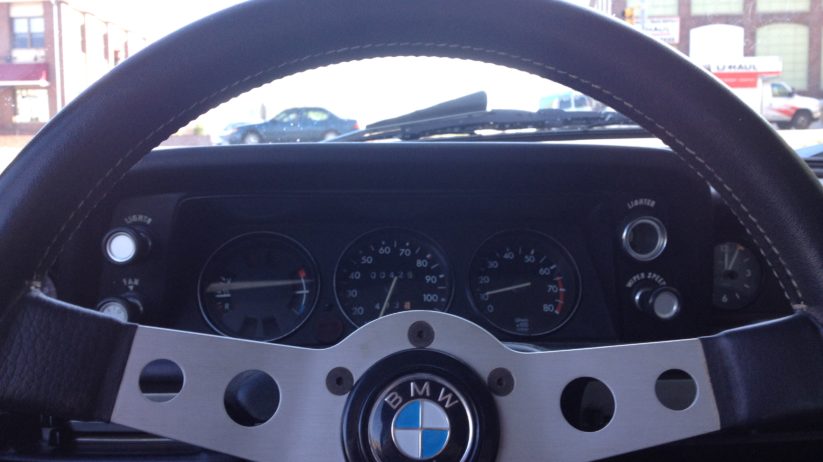A few years ago, I wrote a series of articles about the Turkey, a rusty, long-dead 1973 2002 that followed me home. Rust had eaten away not only the rockers, but also the mounting point for the right rear subframe bushing, so, absent a major bodywork commitment that the car didn’t warrant, it was likely biding time on the way to being parted out. Usually I pass on anything that might be a parts car, as I don’t have the room for one—or the desire to go through the effort—but the owner goaded me into making an offer, and before I knew what happened, for $250 it was mine. It initially wasn’t clear which one of us was the Turkey.
While I wouldn’t buy an entire car just to get a single component (actually, that’s not true; I bought a rotted and flooded 635CSi just to get its 16″ Alpina open-lug wheels), one of the appealing things about the Turkey was that it had a silver Momo Prototipo steering wheel, which is sort of a poor man’s Petri, possessing a very similar design with three tapered spokes containing holes of shrinking diameter. Even on the ratty Turkey, I liked the way that the wheel’s silver spokes picked up the silver in the centers of the round dashboard switches, the backplates of the vent controls, and the chrome strips on the door cards. I didn’t have much interest in the car, but I did covet the wheel.
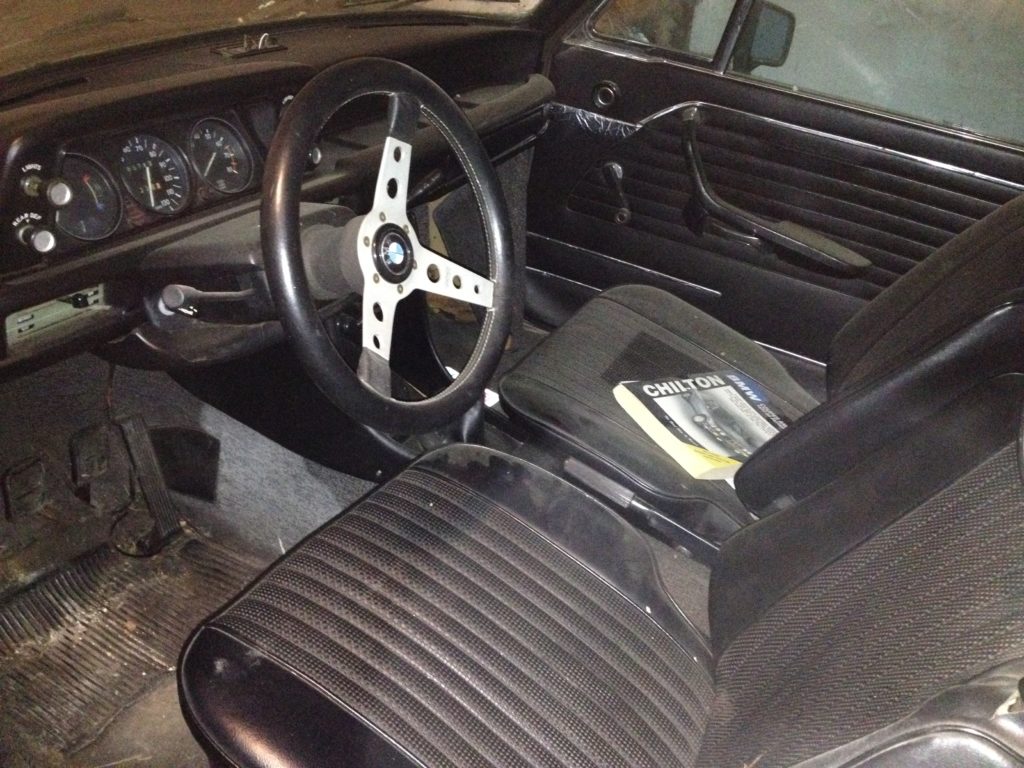
The Momo Prototipo wheel in the Turkey caught my eye.
Once the Turkey was in my driveway, I not only got it running, but drivable. I put it up for sale and a local fellow with welding skills bought it. But before the car left the premises, I snagged the Prototipo, replacing it with another old beat-up Momo I had lying around.
I immediately and zealously mounted the Prototipo wheel in Kugel, my Chamonix ’72 tii. Ever since I’d bought Kugel, it had been wearing a beefy 350-mm Momo wheel. Although it fit my hands really nicely, it was too small for my aging upper body to use to wrestle the car into parking spaces, and it had a pumped-up look and a yellow horn button, the combination of which wasn’t to my taste. In contrast, the Prototipo was perfect in both style and size.
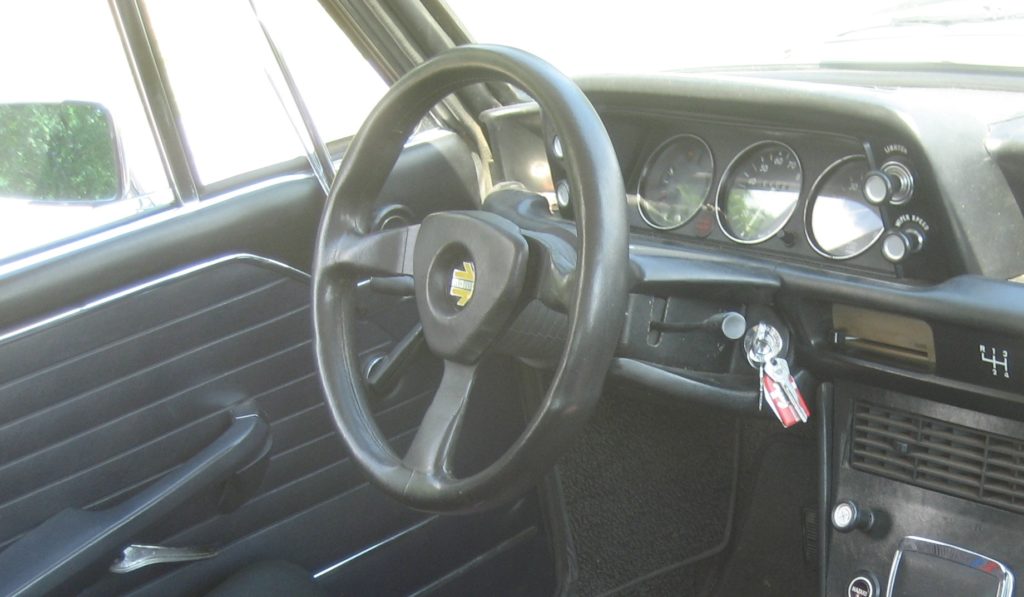
The wheel originally in Kugel didn’t really light my fire.
There was one problem: The horn contact on the back of the Prototipo wheel was broken.
Virtually every car has some sort of a mechanism for the horn push-button on the steering wheel to make contact with the rest of the horn circuit as the wheel is twisted around. It’s usually not simply a wire, because over time, the turning of the wheel would twist and break the wire. On a vintage car without other controls on the steering wheel, there’s almost always a circular ring and a spring-loaded contact that touches it; it’s just a question of which one of them is moving and which is stationary. On a 2002, the horn ring is fixed to the steering column, and the spring-loaded contact is on the back of the steering wheel. In many other cars, they’re reversed, with the ring mounted on the back of the steering wheel. (Note that on modern cars with other push-button controls on the wheel, there’s a more complicated device called a clock spring that allows for multiple electrical contacts.)
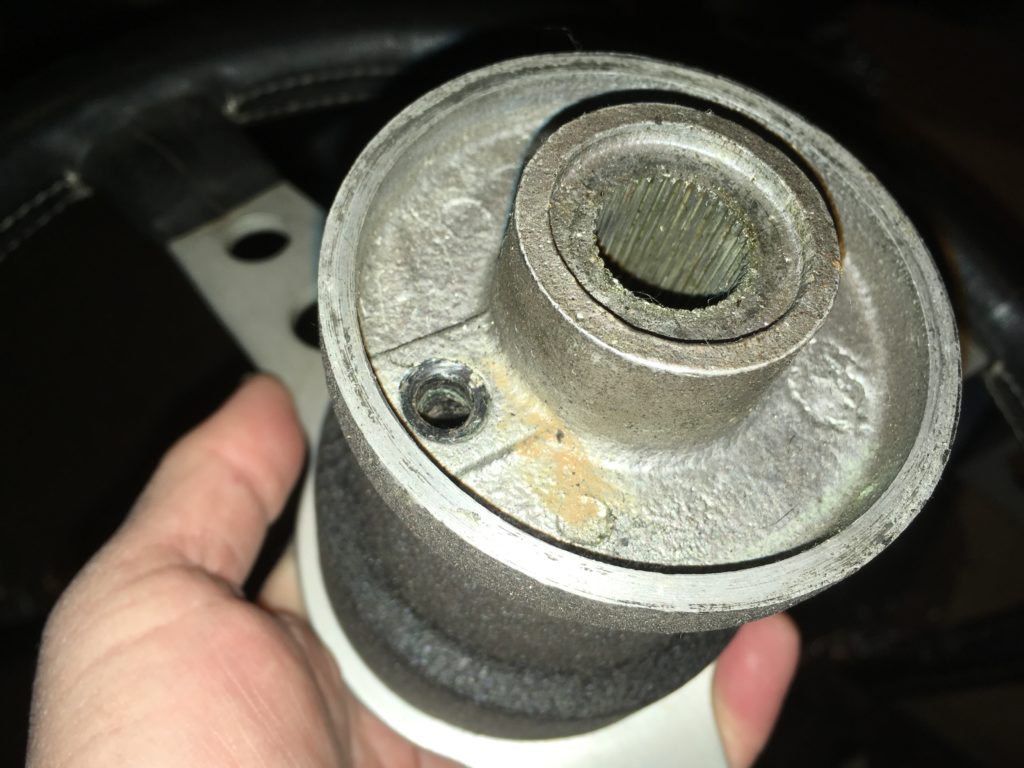
The Prototipo is missing the contact plunger that goes in the hole.
The horn contact on the Prototipo is the same basic design as it is on a stock 2002: A little spring-loaded hexagonal plunger peeks out from inside a plastic cylinder, and a wire with a spade fitting at the end connects the back of the spring to the horn push-button on the steering wheel. But the diameter used by the Momo hub adapter is a little larger than on a stock 2002 wheel. The problem with mine was that the plastic cylinder was mangled, and the dowel and spring were missing.
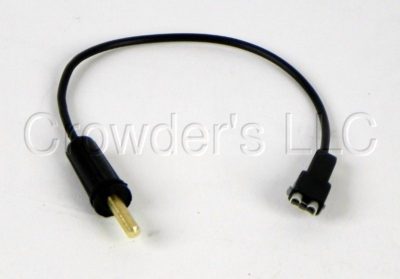
“MOMO Hub Adapter Horn Connector – Plunger Style.” Photo courtesy of Crowder’s LLC.
Initially I slapped the Prototipo on Kugel as-is and drove without a horn, but a few months later I had to get the car inspected, so the horn had to work. I swapped the original wheel back onto it, got it inspected, then put the Prototipo back on, but having a working horn is a good thing. I tried to, you know, hack it by pulling apart a $5 off-brand eBay-sourced stationary-mounted contact and appropriating its spring and plunger. It would work for a few days and then fail.
I searched on BMW2002FAQ and found an old post by my friend Paul Wegweiser, who advised that a standard 2002 horn-contact assembly, even though it’s thinner, can easily be mounted into the larger hole in a Momo or Nardi wheel using JB-Weld or other epoxy putty, but I didn’t like the permanence of that approach. I searched on eBay for “Momo horn connector,” and bang, there it was! At first I balked at paying twenty bucks for a plastic housing with a metal plunger in it and a piece of wire hanging off it with a spade connector on the end, but sometimes you just need to, as they say, pay the man.
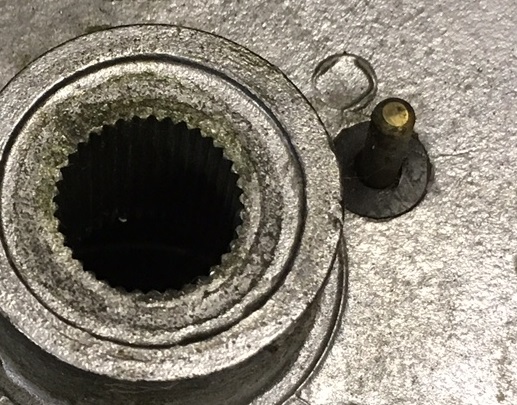
Fixed!
It fit perfectly. It worked perfectly. It completely solved the problem. Done!
I’m going to take this as a lesson and do more of this “Just buy the correct part” thing. Well, at least maybe once more.—Rob Siegel
Rob’s new book, Just Needs a Recharge: The Hack MechanicTM Guide to Vintage Air Conditioning, is available here on Amazon. His previous book Ran When Parked is available here. Or you can order personally inscribed copies of all of his books through Rob’s website: www.robsiegel.com.

